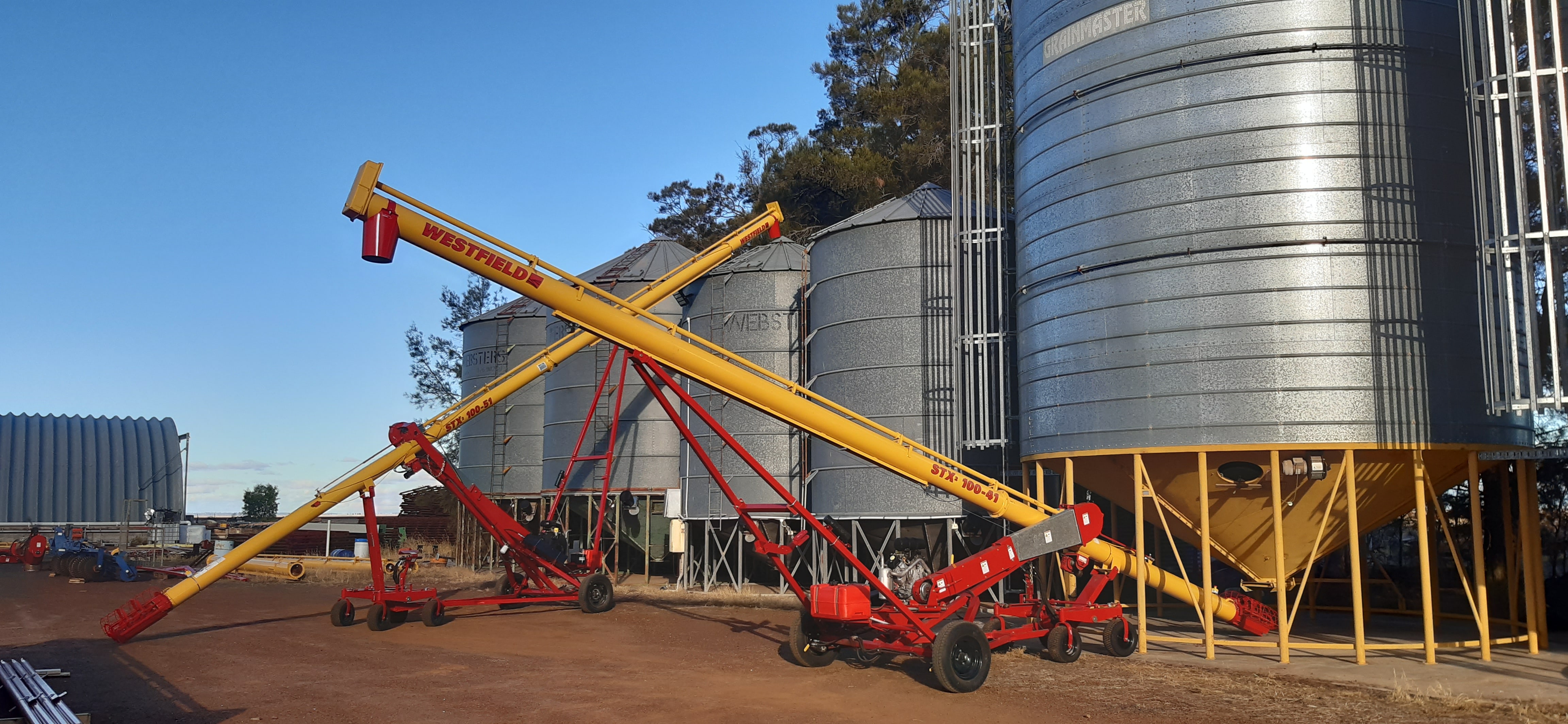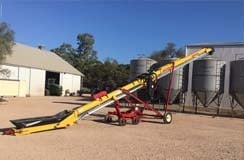Just like trucks and tractors, transportable grain augers need routine servicing to ensure they are always ready to go when harvest time rolls around.
Investing some time and elbow grease into your auger will help prevent it from breaking down due to a lack of maintenance and stopping your harvest operations cold. And just like with any other piece of farming equipment, regular service work will also go a long way in extending the service life of an auger.
To avoid your transportable auger becoming the weakest link in your harvest, follow this 8-point service checklist:
1. Inspect the auger flighting
Be sure to periodically inspect the grain intake and main transfer points of your transportable auger. Inspect all flighting and replace wear edges as necessary, remembering that worn flighting leads to poor performance and increased grain damage.
When you first run a transportable auger with grain in it after a previous harvest, the auger should never loudly bang or violently shake. If this does occur, it probably means the flighting was damaged or the centre flight pipe was bent during the last harvest. In such case, the flighting will need to be repaired or replaced. If removing flighting, also be sure to check the flighting bolts.
2. Inspect your PTO shaft
Greasing the crosses and yokes of your PTO shaft and making sure all the guards are in place is pretty common practice. A servicing task that is often overlooked is to make sure you have the right shear bolts in the PTO.
PTO shear bolts are specific to the PTO shaft’s horsepower rating. It might seem OK to replace a sheared bolt with any you have on hand during auger use, but PTO shear bolts ensure the PTO doesn’t transfer too much or too little horsepower to the equipment. It is bad for the equipment and potentially unsafe to the operator to do so. Consider having some of the correct shear bolts on hand so you don’t have to compromise.
3. Check the gearbox oil
The oil in the gearboxes of most transportable augers doesn’t require frequent changing, but you don’t want too little or too much. Consult your owner’s manual for the proper gearbox oil type and to find out how much is enough. Gearbox oil level requirements do vary somewhat based on gearbox mount position.
4. Inspect and tension truss cables
Longer transportable augers typically have truss cables along the tubing. Inspect them for cuts or fraying or any other form of deterioration. Make sure tension is evenly distributed between all the available auger truss cables. When you sight up the tube, the auger should be straight from left to right and have a slight bow upward towards the discharge end.
Properly tensioned cables help your transportable auger run quieter and increase the lifespan of the tube and flight. Once the cables are adjusted, verify that all cable clamps, nuts and bolts are tightened sufficiently. Inspect the lift cable and replace with the correct cable if there is any sign of rust or corrosion.
5. Inspect all guards
Guards are for your protection. Ensure all guards are in place and in good working order. Pay particular attention to the intake flighting guards and pulley guards.
6. Inspect the tyres
After pumping tyres to the correct air pressure, remember to inspect the condition of the tyres. Sun and weather can make your tyres brittle. Check for cracks in the sidewalls or cords showing through in the tread area. Replace tyres if you see either of these flaws. You don’t want your tyres to fail while you are moving a transportable auger. The tyres bear much of the weight from a loaded auger, so make sure they are up to the task. Also periodically check the condition of the wheel bearings.
7. Inspect any hydraulic lines and cylinders
If there are any leaks, replace the cylinder or put a seal kit in it. Inspect the connections of all hydraulic lines for leaks and hydraulic hoses for any cracks or holes. Replace as necessary.
8. Grease everything
It can be a pain to get the nozzle of the grease gun on some of them, but don’t neglect the grease fittings on your bearings and chain and sprockets. Don’t skip any. Those grease fittings are in those locations for a good reason.
Regularly greasing these parts is one of the most important things you can do to maximise the life of your auger and minimise component failure. There are typically grease points on all PTO shafts and bearings, but don’t forget chains inside any drive boxes, fittings on gearboxes and even on parts of the auger’s transport gear and all pivot points.
Want more tips on how to maximise the life of your transportable auger? Talk to the team at Westfield Augers.
Westfield Augers is the largest grain auger manufacturer in the world and we’ve built our reputation on reliability, performance and support. With over 68 years’ experience as a dedicated grain auger manufacturer, our augers offer a long service life and high resale value.
Simply click here to get in touch with us today.







